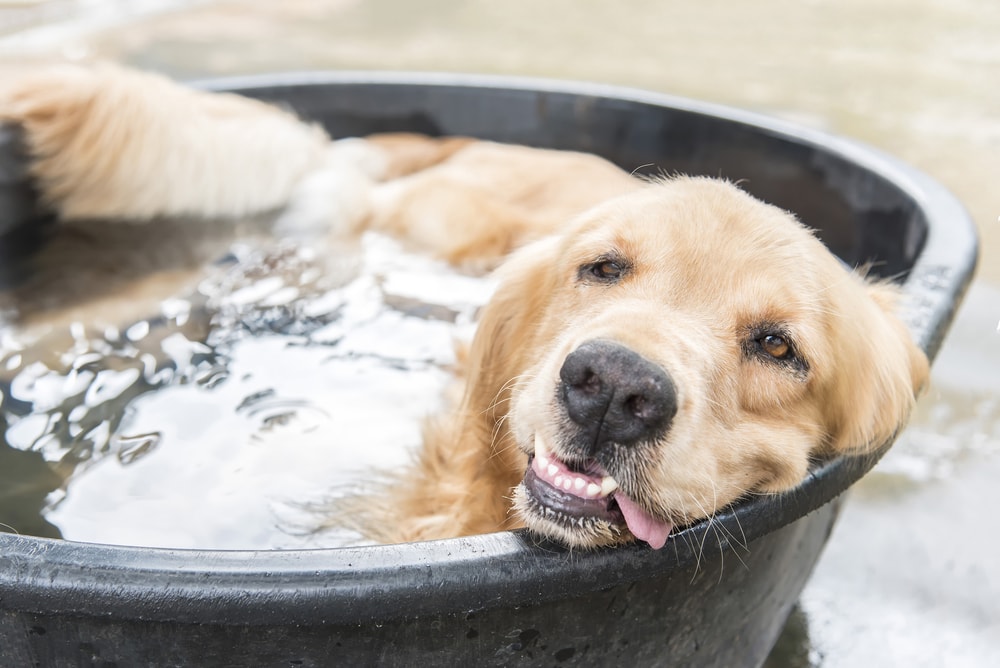What a difference a year can make. Last year we experienced above-average rainfall for the month and below-average temperatures for July. But not this year! Here we are in the last week of July and we are experiencing a hot and dry July.
So, why do we refer to this time of year as the Dog Days of Summer? The dog days are not just about our dogs starting to pant or us starting to complain about the heat. Actually, the Dog Days of Summer refer to the 40 days beginning July 3 and ending August 11, which coincide with the morning rise of the Dog Star, Sirius. Sirius is the brightest star in the sky, not counting our sun. Under the right conditions, it can even be seen during the day. Sirius is one star in a group of stars that form the constellation Canis Major, meaning “Greater Dog.”
During trying times like we are experiencing now with the extreme heat and very little rainfall, we need to be water-wise for the sake of our plants.
HOW MUCH WATER DO PLANTS NEED AND ACTUALLY GET?
Keep in mind that the number one cause of plant failure is insufficient or incorrect watering. I can’t stress enough the need to water our plants. Personally, I am having to water every day my tomato plants that are growing in containers.
As I mentioned earlier, the most important survival factor for our plants, especially for the newly planted shrubs, trees, perennials, and annuals, is soil moisture. Watering during the first growing season is crucial.
After planting, the roots of shrubs and trees will eventually spread into the surrounding soil. Until that happens, plants continue to draw water mostly from their small root ball.
The best advice I can give you is this: always water your newly planted plants where the root ball is. Water thoroughly. Take your water hose and let the water tinkle out at the base of the trunk, which is where the roots are located. Let the soil get thoroughly saturated. Most people are unaware of the fact that water from surrounding soil will not move into the new root ball. Two different types of soils rarely “share” water. The new root ball will actually dry out and shrink, “pulling away” from surrounding soil.
Water tends to move down, but not sideways. So, directly soak each root ball thoroughly. As relaxing or fun as it is to stand in your garden with a hose spraying your new plants, it does little for the plants themselves. The leaves of a shrub, perennial, annual, or tree will often shed the water and prevent it from contacting the root ball soil. This is why an irrigation system should not be relied upon to water newly planted plants.
One final thought to share with you: BE WATER WISE! It is always best to water early in the morning or in the evening to minimize evaporation. We need to protect our valuable water resources, especially during these hot, dry months. None of us want to see water restrictions.


I live in Northern Virginia and my garden, which I landscaped virtually from scratch struggles with clay soil that surrounds the hole dug when each plant was planted. When I have to hand water I have relied on counting seconds with the hose on full around the root ball area. Smaller plants might get 10-15 seconds, medium shrubs get 30 seconds minimum and up to a minute if things are really dry. Small trees get infrequent deep watering, 15 minutes covering the whole root area. Do you have a rule of thumb for this counting system? I really appreciate the guidance.
Alexis,
Good to hear from you.
This is a very timely and good question.
You need to know your soil in order to adequate gauge how much water is needed. I would think water pressure would fit into this equation as for counting. I recommend that most plants require an inch of watering 2 to 3 times per week. I like for people to water either early in the morning or late in the evening in order to reduce the loss of moisture to evaporation. Also, i recommend slwoly watering in order to be sure that the entire soil area is watered.
The true way to measure the need for watering is using your finger. Stick your finger into the soil near the root system. If it feels damp like a sponge then you have watered adequately. Then check again in a day or two.
Thanks so much for your prompt reply. Very helpful.